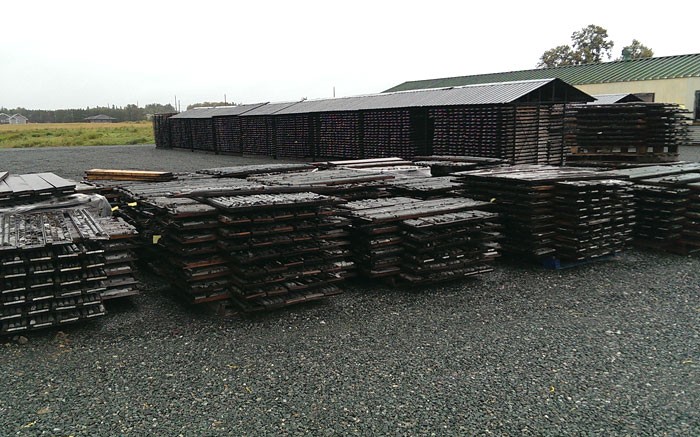The co-founder of Osisko Mining — who brought the $1-billion Canadian Malartic mine into production, and oversaw the sale of the company earlier this year to Agnico Eagle Mines (TSX: AEM; NYSE: AEM) and Yamana Gold (TSX: YRI; NYSE: AUY) in a cash and share deal worth $3.9 billion — is now poised to work his magic at junior Falco Resources (TSXV: FPC; US-OTC: FPRGF).
Roosen, currently chairman and CEO of Osisko Gold Royalties (TSX: OR), a gold-focused royalty and stream company whose cornerstone asset is a 5% NSR royalty on Malartic, joined Falco as chairman in September and complimented Falco for being the only junior to control the last of the large Abitibi camps not owned by a major gold producer. (In August Osisko Gold Royalties announced that it plans to raise its stake in Falco to 14.99%, which will make it the junior’s largest shareholder.)
Trent Mell, Falco’s president and CEO, tells The Northern Miner that the day Roosen’s appointment to Falco’s board was made public, he received a number of emails from people in the province of Quebec congratulating him and saying Roosen was a great addition, given his reputation in the Abitibi of doing things the right way.
“His expertise at Malartic and moving part of a town has won him a lot of credit in Quebec,” Mell says. “There are three things we expect to get out of Sean’s presence: The first is better access to capital, and we’re already feeling that; the second is technical expertise; and the third thing — not to be underestimated — is the social licence to operate.”
In 2012 Falco acquired the remnants of one of Canada’s most established volcanogenic massive sulphide (VMS) mining districts — the Rouyn-Noranda mining camp — including the past-producing Horne mine complex, where between 1927 and 1976 Noranda produced 11.6 million oz. gold and 2.5 billion lb. copper, most of which came from the mine’s upper 3,000 feet (914 metres). In addition to the Horne mine complex Falco has 100% ownership of 730 sq. km of property, or 70% of the entire camp, which includes 13 other gold and base-metal mine sites.
The junior’s primary asset is the Horne 5 underground deposit, which sits below the old workings of the Horne mine. In March Falco completed an initial inferred resource estimate for the upper part of Horne 5.
At an $80-per-tonne net payable metal or net smelter return (NSR) cut-off, the inferred resource came to 25.3 million tonnes grading 2.64 grams gold per tonne, 0.23% copper and 0.70% zinc for 2.15 million contained oz. gold, 131 million lb. copper and 393 million lb. zinc.
Falco hopes to upgrade the resource from the inferred to the indicated category over the next nine months, with a nine-hole confirmatory drill program designed to validate previous work, run metallurgical tests and add silver assays to the estimate. The maiden resource estimate was taken from historical data, and management says the drill program could increase the resource’s size by 30%. A preliminary economic assessment could follow when the resource approaches 4 million oz. gold, Mell says.
“We know the grades we have are higher than both Agnico Eagle’s Goldex mine and AuRico Gold’s Young-Davidson mine,” Mell says. “When we look at what we know about bulk tonnage underground mines today, we recognize that the key to unlocking value for a deposit like this is to add tonnes to support a long life and high throughput operation.”
In September Falco signed an option agreement with the City of Rouyn-Noranda to acquire surface rights to the land above the Horne 5 deposit and next to the Horne smelter. Under the agreement Falco has a five-year option to buy more than 5 hectares of land in the Horne Complex that could support a headframe, mill and other surface facilities to develop the Horne 5 deposit.
Mell says the company has no plans to make a development decision in the near-term, but says the acquisition “preserves that option by ensuring there are surface rights from which to operate a mine.”
In addition to its work at Horne 5, Falco has been drilling a large borehole anomaly with conductivities at its Lac Hervé property that it says are typical of massive sulphide mineralization. Lac Hervé covers over 25 sq. km within a prospective VMS area, 15 km northeast of Rouyn-Noranda in the eastern part of Falco’s land package.
Over the last year Falco’s shares have traded in a range of 32.5¢ to 87¢, and at press time changed hands at 54¢ per share.


Be the first to comment on "Sean Roosen brings golden touch to Falco"